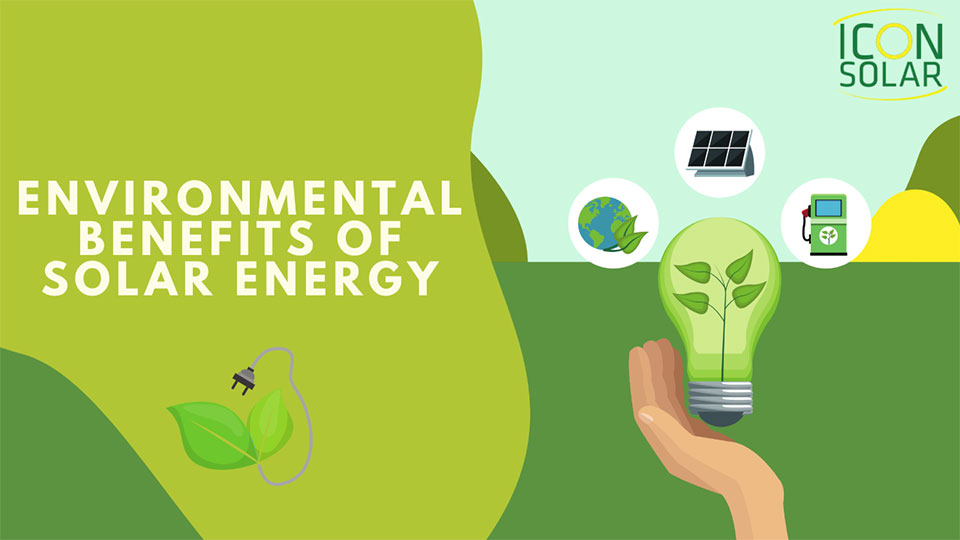As modern society grapples with the implications of climate change, a pressing inquiry emerges: how can we transition to a sustainable energy paradigm while mitigating environmental degradation? Solar power, derived from the inexhaustible energy of the sun, offers a beacon of hope. But can it truly replace traditional energy sources without facing notable challenges? This exploration into the environmental advantages of solar energy will elucidate both its merits and the potential hurdles along the way.
One of the most significant advantages of solar power is its ability to drastically reduce greenhouse gas emissions. Traditional energy sources, particularly fossil fuels, release carbon dioxide and other pollutants into the atmosphere. These emissions contribute to the greenhouse effect, amplifying global warming. In contrast, solar panels generate electricity without emitting harmful gases, thereby presenting a cleaner alternative. Numerous studies have demonstrated that widespread adoption of solar technology could lead to a substantial decrease in the carbon footprint of energy generation.
Additionally, solar energy contributes to water conservation efforts. Conventional power plants require immense quantities of water for cooling processes, often leading to depletion of local water resources. In stark contrast, solar photovoltaic (PV) systems operate with minimal water requirements, making them particularly advantageous in arid regions where water scarcity is a pressing concern. The integration of solar power could alleviate some of the stress placed on local aquifers while simultaneously generating electricity sustainably.
Solar power also engenders a reduction in air pollution, pivotal for public health. Energy production from fossil fuels emits numerous air pollutants, including sulfur dioxide, nitrogen oxides, and particulate matter. These pollutants can exacerbate respiratory issues and other health complications among populations, especially in urban areas. By transitioning to solar energy, the reduction of such pollutants would not only improve air quality but potentially save millions in health care costs related to pollution-related illnesses.
Moreover, the potential for job creation in the solar sector presents a compelling environmental advantage intertwined with economic benefits. The installation and maintenance of solar panels necessitate a skilled workforce, which can spur local economic growth. Distributed solar energy systems can promote local economic development by creating jobs and minimizing reliance on imported fossil fuels. This localized approach to energy production could promote energy independence while contributing positively to community resilience.
Nevertheless, the solar industry is not without its challenges. A significant concern is the environmental impact associated with the manufacture and disposal of solar panels. The production of photovoltaic cells involves the use of various toxic substances and can lead to hazardous waste if not managed properly. Therefore, establishing comprehensive recycling programs and sustainable manufacturing processes is imperative to mitigate these risks. Finding a balance between the benefits and the environmental costs of solar technology will be a critical challenge for the sector moving forward.
Furthermore, solar energy systems are dependent on geographical location and weather patterns, which raises the issue of energy reliability. Solar power generation is often intermittent, as it relies on sunlight availability, posing challenges for energy supply in regions with less sunlight or during winter months. This intermittency necessitates the development of robust energy storage solutions and diversified energy systems that integrate solar with other renewable sources. Without such advancements, the full potential of solar power may remain unrealized.
The geographical footprint of solar installations is another aspect that warrants attention. Solar farms require vast tracts of land, which can lead to habitat disruption if not sited carefully. The challenge lies in identifying appropriate locations that minimize ecological impact while maximizing energy generation. Policies and guidelines that promote site assessment and ecological conservation can help mitigate these concerns. Innovative technologies, such as agrivoltaics, which combine agriculture and solar energy production, could pivot these challenges into opportunities, resulting in dual land use efficiencies.
In addressing these challenges, collective action and a cohesive regulatory framework will play an influential role. Incentives for research and development in sustainable solar technologies, along with public-private partnerships, can bolster efforts toward cleaner and more efficient solar energy systems. Through collaborative initiatives, progress can be made in overcoming impediments and enhancing the overall efficacy of solar power as a cornerstone of sustainable energy solutions.
As we explore the myriad advantages of solar power, the fundamental question remains: can we effectively harness this abundant energy source while navigating the inherent challenges it presents? As we advance towards a more sustainable future, the winds of change beckon collaboration, innovation, and conscientious planning. With concerted efforts, solar energy can emerge not only as a viable alternative to fossil fuels but as a catalyst for a cleaner, healthier planet. The journey forward is fraught with complexity, yet the possibilities are boundless, inviting us to rethink our energy landscape for the betterment of both humanity and the environment.










